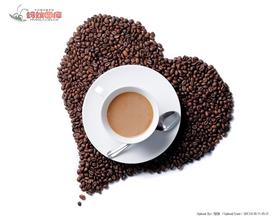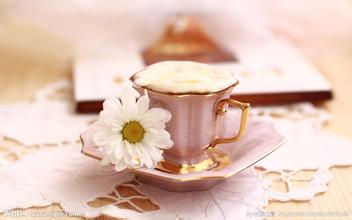Introduction to the characteristics of Dominican Santo Domingo Coffee Flavor Manor with rich aroma and mellow taste
After Santo Domingo returned to Spanish rule, the local people gradually formed a consensus on independent statehood. On 30 November 1821, the former Governor of Santo Domingo, under the leadership of General Jos é N ú ñ ez de C á ceres, proclaimed statehood, named Haiti, Spain, and expected to merge under the Greater Colombian State led by President Bolivar of South America. [3]
But nine weeks later, in February 1822, the president of Haiti, Jean-Pierre Bouyer, occupied Spain and Haiti, and once again completed the reunification of the island. After Boyer occupied the eastern Spanish state of Haiti and liberated all the local slaves, Bouyer ordered the confiscation of the land of the white landlords and the complete return of the agricultural land of the whole country. Bouye also closed all universities, included all multinational (Dominican Republic for short) men between the ages of 18 and 25 in the army, and began to adopt a high-handed policy towards many countrymen. Many upper-class whites left the island and fled to Cuba, Puerto Rico and other areas. [3]
Bouye began to plant cash crops on the island, carry out tax reform and open up trade with foreign countries. Although these policies have greatly increased sugar cane and coffee production in Dominica, they are not widely accepted by farmers. Bouye thought that the liberation of many countries was a boon to many people, so he often did not pay any pay to Dominican soldiers in the army, and many soldiers began to rob local residents everywhere. This vicious circle finally led to economic stagnation and heavier and heavier fiscal taxes, causing people of many countries and even liberated slaves to unite against the rule of Bouaye and overthrew the Bouayer regime in 1843.
The Dominican Republic is a popular country for travelers. It lives next to Haiti on the island of Hispaniola in the West Indies, Dominica in the west and Haiti in the east. The world's whitest and softest white sand, cool sea breeze from the Atlantic and Caribbean and warm sunshine from the tropics make it a holiday paradise on a par with Maldives and Hawaii. It is the second European colony in the American continent after Greenland. It currently has the oldest Catholic churches, universities, roads and bunkers in America, and its capital, Santo Domingo, is also the oldest city and capital in the Americas.
The Dominican Republic has also experienced a history of unrest and poverty, and now the country has implemented democratic elections and entered a period of stable development, but it has not yet formally established diplomatic relations with China, but has maintained so-called "diplomatic relations" with Taiwan. It seems that this has nothing to do with coffee, but in fact, it still has an impact. The exchanges between the two countries that have not established diplomatic relations are subject to many restrictions in all aspects, of course, it will also affect our coffee trade. Dominican coffee is mainly exported to the United States and a small number of European countries because of its superior quality, which is rarely seen in our Chinese mainland.
Dominica-White Beach and Black Coffee
The earliest coffee in Dominica was introduced from Martinique (the overseas province of France), dating back to the early 18th century. Dominica is an island country with a tropical climate, with little change in temperature throughout the year. Except for the lower temperature in the Central Cordillera Mountains, which can reach less than 0 ℃ in winter, the average annual temperature in other areas is between 25 and 30 ℃, while affected by the mountain topography, the north and east face the northeast trade wind with an annual precipitation of 1500-2500 mm, which belongs to tropical maritime climate. The mountain forest is dense, the leeward southwest annual precipitation is 500-1000 mm, the dry season is long, belongs to the savanna climate.
The temperate climate in Dominica is conducive to coffee cultivation, and the best places to grow coffee are the Barahona region in the southwest and the Cibao Valley north of Santiago, Dominica's second largest city. The northern region, represented by Hibao, and the southern region, including Okayabani Santo Domingo, produce good coffee. Among them, the coffee produced by Santo Domingo and Barney is world-famous and is almost synonymous with domiga coffee.
Dominica-White Beach and Black Coffee
Coffee in Dominica varies slightly in taste according to the altitude of the region where it is grown, with sour but rich taste in the highlands, and less sour and smoother taste in the lowlands. On the other hand, the high-quality coffee beans produced by some Dominican estates have a rich aroma, mellow taste and moderately bright sour taste, and are often compared with those from Puerto Rico or Jamaica.

Important Notice :
前街咖啡 FrontStreet Coffee has moved to new addredd:
FrontStreet Coffee Address: 315,Donghua East Road,GuangZhou
Tel:020 38364473
- Prev

Introduction to the characteristics of Kilimanjaro Coffee Flavor Manor Manor in Tanzania
Kilimanjaro Coffee (Kilikmanjaro Coffee) is produced in Mount Kilimanjaro, the highest mountain in Africa in northeastern Tanzania. Its coffee is of good quality, rich aroma and outstanding sour taste, so it is suitable for the preparation of comprehensive coffee. Kilimanjaro coffee is an important lifeline of the Tanzanian economy. About 17% of the foreign exchange is created by coffee and is mainly produced.
- Next

Introduction to the characteristics of the famous Costa Rican Yerzaro Coffee Flavor Manor
Costa Rica is located in the Central American isthmus, belonging to North America, 10 north latitude, 84 west longitude. It is bordered by the Caribbean Sea to the east and the North Pacific Ocean to the west, with a coastline of 1290 km (212km on the east coast and 1016 km on the west coast). Costa Rica borders Nicaragua in the north (309 km long border) and Panama (639 km long border) south-southeast. Total
Related
- Detailed explanation of Jadeite planting Land in Panamanian Jadeite Manor introduction to the grading system of Jadeite competitive bidding, Red bid, Green bid and Rose Summer
- Story of Coffee planting in Brenka region of Costa Rica Stonehenge Manor anaerobic heavy honey treatment of flavor mouth
- What's on the barrel of Blue Mountain Coffee beans?
- Can American coffee also pull flowers? How to use hot American style to pull out a good-looking pattern?
- Can you make a cold extract with coffee beans? What is the right proportion for cold-extracted coffee formula?
- Indonesian PWN Gold Mandrine Coffee Origin Features Flavor How to Chong? Mandolin coffee is American.
- A brief introduction to the flavor characteristics of Brazilian yellow bourbon coffee beans
- What is the effect of different water quality on the flavor of cold-extracted coffee? What kind of water is best for brewing coffee?
- Why do you think of Rose Summer whenever you mention Panamanian coffee?
- Introduction to the characteristics of authentic blue mountain coffee bean producing areas? What is the CIB Coffee Authority in Jamaica?

